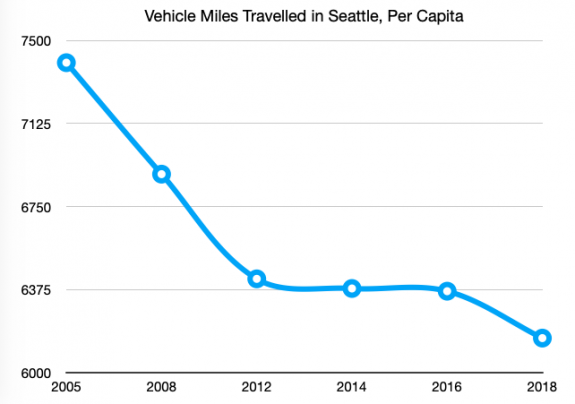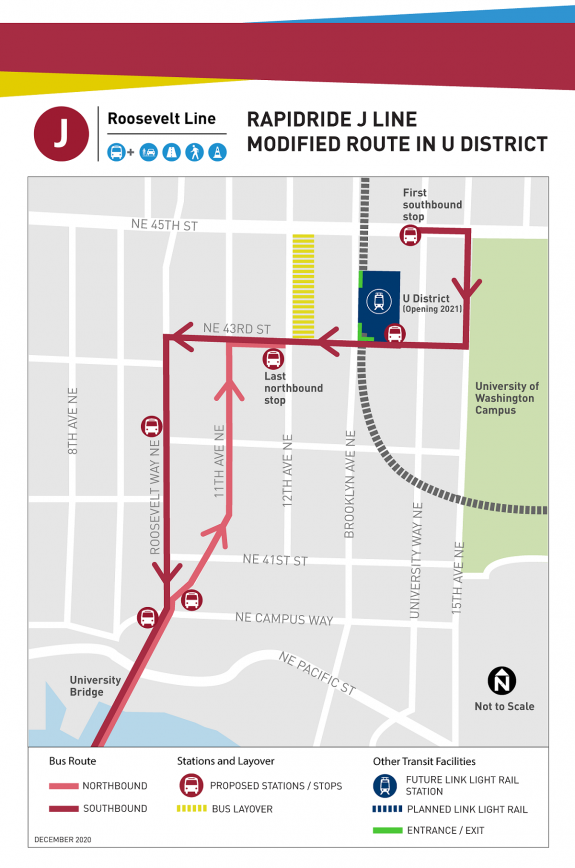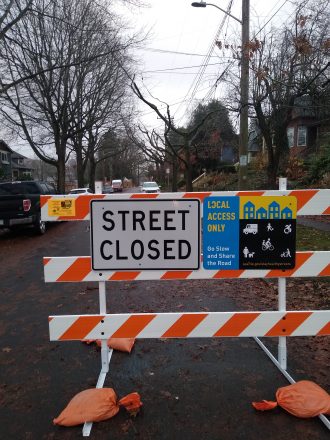The Seattle Department of Transportation has finalized a traffic signals policy intended primarily to improve mobility for people walking and rolling at intersections. This policy comes out of a process that the agency convened with a group called the Policy and Operations Advisory Group, which consists of members of the different modal advisory boards, the transportation equity workgroup, the pedestrian access advisory committee and a few other groups with a stake in SDOT policy.
The policy update includes some benefits that will be seen citywide, but the policy falls short of the promise of revamping signal timing with the goal of moving people over vehicles. A major shortcoming is in the proposed signal lengths, aka the amount of time for a traffic signal to complete a full cycle if you just missed it. Within the middle of Seattle’s densest neighborhoods, a single length of two minutes would be standardized, with a length of even two and a half minutes permitted.
Cycle lengths would be lowest at intersections along streets downtown, with a target of 50-90 seconds, but a maximum signal length of a minute and a half is still very high for the highest volume streets for pedestrians. Urban village neighborhood streets and neighborhood corridors, which include streets like Broadway in the heart of Capitol Hill (which coincidentally has the highest pedestrian volumes of any street in Seattle in recent years), would be able to have longer signal lengths than in downtown. Streets with an urban village main or urban center connector designation (like Rainier Ave S or College Way N) would be able to have longer cycle lengths still. Industrial access streets like 15th Ave W able to have the longest cycle lengths, up to three minutes.
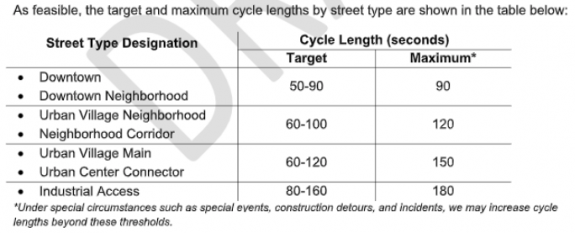
You can use the chart above to match street type designations with this this interactive map to see what the cycle lengths could be on any specific street.
One factor influencing these proposed cycle lengths is a big change that SDOT is proposing to make all every single intersection in Seattle: reducing the standard pedestrian speed used to calculate how much time is provided to cross from 3.5 feet per second to 3 feet per second. The policy will also include a secondary calculation to ensure that someone standing six feet back from the intersection would be able to cross the street using a speed of 2.5 feet per second and use this to adjust total time provided to cross. This should provide more time to cross most intersections that get revised under the policy.
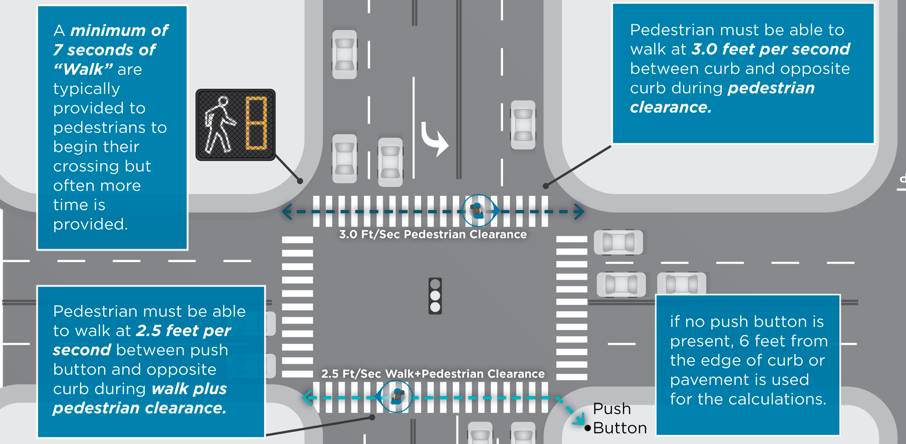
SDOT says that implementing this policy “should reduce wait times and provide more frequent opportunities for pedestrians to cross the street”, while having the effect of “slight increase in delay and travel time” for transit and freight traffic.
But the proposed cycle lengths for urban villages and centers exceed the range noted as ideal by the National Association of City Transportation Officials (NACTO), which says “longer signal cycles and corridor-based timing schemes make large avenues into barriers that separate neighborhoods rather than joining them”. NACTO notes that 60-90 seconds is ideal for urban areas. SDOT should reassess whether intersections outside downtown in most cases need to have a targeted signal length of more than a minute and a half, and at a minimum bring down the very high max cycle length.
Seattle Neighborhood Greenways has set up an action alert on the proposed signal policy’s shortcomings, which you can use to contact SDOT directly here.


